New Xbox Series X SSD memory card teardowns confirm our past suspicions; The SSD utilizes Phison's E19T memory controller alongside high-performance TLC flash memory.
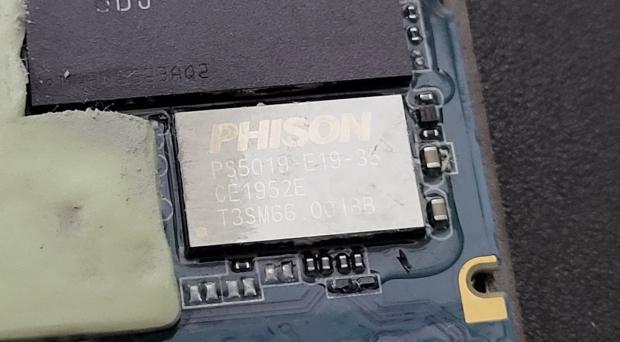
GamesBeat recently tore down the Xbox Series X SSD memory card and revealed vital info about the PCIe 4.0 M.2 NVMe storage hardware. The SSD is the heart of the Xbox and everything from 4K 60FPS, 120FPS, ray tracing, and more is made possible by the high-speed storage. The expandable SSD card is manufactured by Seagate and is a perfect copy of the internal SSD inside the Series X console, so what's inside the card should reflect the actual storage configuration in the dedicated console.
As we predicted in our Xbox Series X SSD video, the SSD features a mid-tier Phison E19T memory controller with four channels, confirming PCIe 4.0 x4 lane performance. The card's CFX (CFExpress, a card interface used in digital camera storage) also supports 4x lanes and reflects portability, ease-of-use, and the overall comparatively mid-tier performance of the storage.
The E19T controller is a DRAM-less chip--that is it doesn't come with a DRAM cache but instead uses a SRAM cache chip on the console, which keeps costs down and falls in line with the console's emphasis on reads--built on 28nm, has one Cortex R5 core, and isn't classified as a high-end consumer controller.
The E19T controller also supports only 2TB of data, so expect the Xbox Series X cards to cap out at 2TB capacities.
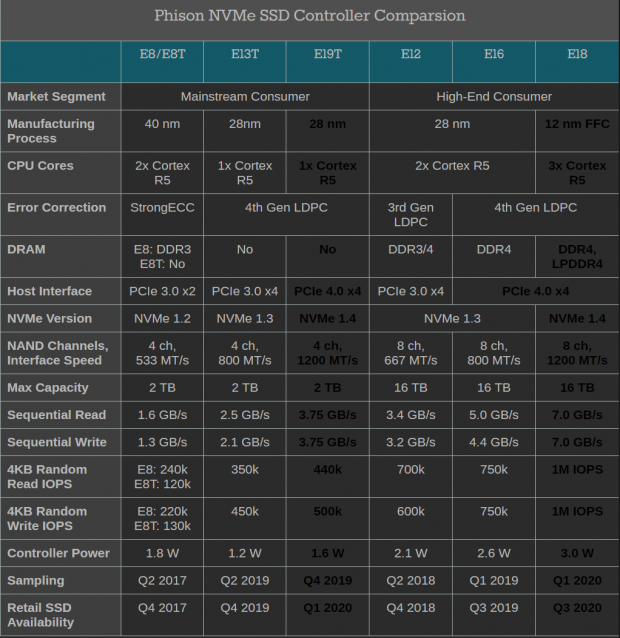
Photo credit: Anandtech
That being said, the controller still pretty powerful and can push data at 3.75GB/sec, which matches the Series X's max 2.4GB/sec uncompressed data flows.
Conversely, the PlayStation 5 uses a customized 12-channel memory controller that's capable of blasting uncompressed data at up to 5.5GB/sec, and compressed data at up to 9GB/sec.
Instead of using raw hardware, the Series X/S consoles will instead utilize a combination of storage-specific APIs and software toolsets from the Velocity Architecture stack. This includes DirectStorage API from DX12 Ultimate that massively streamlines data flows, as well as new features like Sampler Feedback Streaming and more.
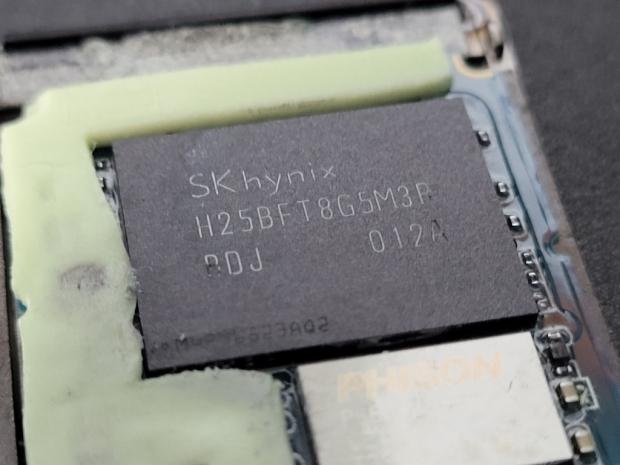
Photo credit: Gamesbeat
4D TLC NAND flash
On the NAND flash memory side, we've gotten confirmation the Xbox Series X uses 4D TLC NAND memory from SK Hynix.
The chip was a bit tricky to identify. The chip is marked as H25BFT8G5M3F, which isn't listed in the SK Hynix product database. The H25 prefix could've related to two different versions of 4D NAND flash: QLC or TLC.
We've now heard the SSD uses 128-layer 4D TLC (triple-level cell) NAND flash for SK Hynix, which is more reliable than QLC but less dense. TLC is optimized for both read- and write-heavy applications and wears down more slowly because it has 3bits per cell and there's fewer voltage levels to traverse.
The downside is that TLC is more expensive to manufacture.
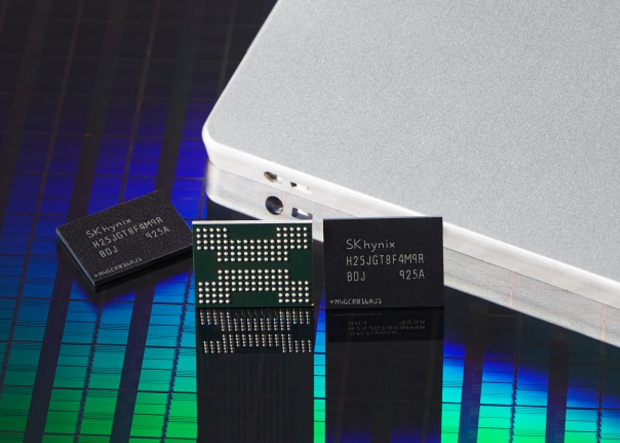
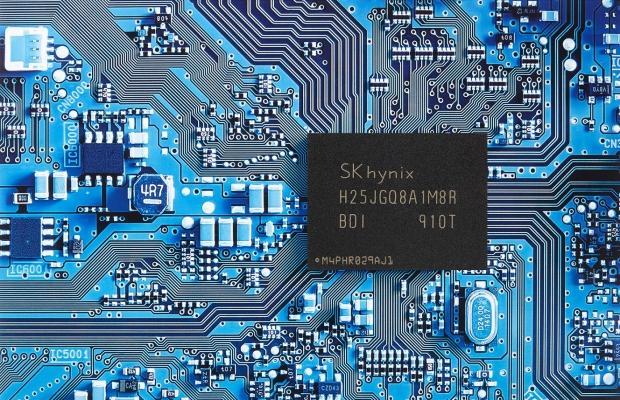
SK Hynix's 4D NAND TLC flash (left) compared to QLC flash (right).
SK Hynix's 96-layer QLC 4D NAND flash started shipping in 2019, and is the most likely memory used in the SSD. QLC (quad-layer cell) is lower-cost because it splits the bits-per-cell across 4 cells, effectively lowering the cost-per-GB ratio.
QLC is less reliable, however, as it uses 16 voltage levels and can break down faster when lots of writes are introduced, but great for read-heavy workloads (like the console environment). QLC is also more dense at 4bits per cell.
The 4D refers to how the cells are stacked vertically, allowing more density. On paper though there's not much difference to SK Hynix's 4D techniques and the 3D stacking used by other OEMs.
QLC is used in SSDs like Samsung's 980 QVO series, and it's advised consumers use both QLC and TLC in conjunction with one another for best results.
TLC is used in performance drives like Sabrents Rocket SSDs that are capable of hitting 5GB/sec speeds.
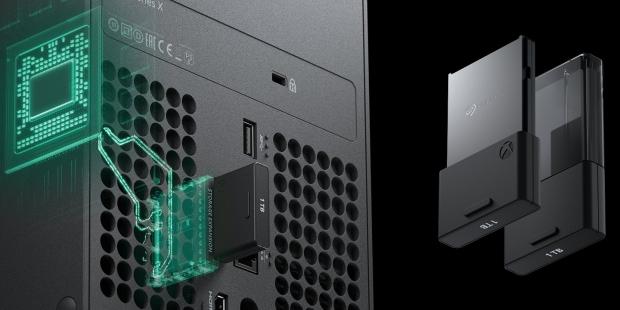
Wrap-Up
So what does all this mean?
Essentially the Xbox Series X's SSD isn't incredibly groundbreaking storage hardware. A big part of the console's performance comes from how the components are optimized using SSD-supercharged dataflows, and a lot of that comes from the Velocity Architecture software stack.
On paper, the Series X's SSD isn't too crazy. Phison's new E18 memory controller, for example, can enable 7GB/sec transfer speeds in higher-end PCIe 4.0 SSDs like Sabrent's Rocket 4 Plus. These drives are enthusiast-grade storage, though, and have higher prices along with customized heat sinks to match. They aren't meant for mass-market consumer hardware like consoles.
Yes, the Xbox Series X's SSD is pretty fast, and yes, it will revolutionize Xbox console gaming. But it won't beat PC gaming any time soon and console tech typically ships outdated--which is the case with all next-gen console components, from the Navi 2X GPU, Zen 2 CPU, the 16GB GDDR6 RAM, and SSD tech.


